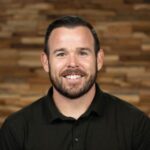Before being raised upon the cross on Calvary, Jesus prayed, ‘I do not ask for these only, but also for those who will believe in me through their word, that they may all be one, just as you, Father, are in me and I in you, that they also may be in us, so that the world may believe that you have sent me’ (John 17:20-21, ESV).
At the Lausanne Fourth Congress in Seoul, I caught a glimpse of Jesus’ high priestly prayer coming to life. Church leaders from over 200 nations and territories from every tribe and tongue gathered with a singular and unified desire to see God’s kingdom come on earth as it is in heaven. The diversity of people and unity of mission was a foretaste of what heaven will be like when we are all gathered around the throne, exalting the great I AM.
Yet, it was at my table—surrounded by brothers and sisters from Ghana, Vietnam, Pakistan, Grenada, and North America—that I experienced that diversity of people with unity of mission in a more personal, powerful way. Besides the diversity of homeland, there was also a diversity of vocation. We had a civil rights activist, a Bible college president, a software developer, a business entrepreneur, a digital ministry consultant, and a pastor. Not only were we diversified in homeland and vocation but also in denomination (Pentecostal, Anglican, Baptist, and non-denominational representation). This rich diversity deeply impacted my faith and helped shape my ministry in Dallas, Texas.
I experienced that diversity of people with unity of mission in a more personal, powerful way.
The experience reminded me of Richard Foster’s Streams of Living Water: Celebrating the Great Traditions of the Christian Faith (2001). Foster champions the high priestly prayer of Jesus by advocating that all of the different Christian traditions that have emerged throughout history must no longer be segregated but in harmony. He illustrates the various Christian traditions as streams of water and argues that when the streams are segregated and isolated, it deprives Christians of a ‘balanced vision of life and faith’ (xv).
Walls and Foster’s insights were my experience from the Lausanne Congress. Hearing diverse yet balanced perspectives has given me a fresh vision of how to inspire collaborative action amongst local churches in Dallas, Texas. Historically, I have tried to unite pastors, but the only fruit of these efforts has been meetings and friendships. Unfortunately, there have not been any actions from these prior unifying efforts.

At the Fourth Lausanne Congress, God showed me that what was missing from my collaborative efforts was a central mission our local churches could work towards. Therefore, when I came home from Congress, we cast a vision for our youth ministry to reach every kid at every school with the gospel of Jesus Christ. The students were inspired and quickly volunteered for this mission. However, it was glaringly apparent that this task was too big for only one church to accomplish. So, the students went to their schools and started gathering their Christian friends to join them in the unified mission of making disciples in their schools.
when I came home from Congress, we cast a vision for our youth ministry to reach every kid at every school with the gospel of Jesus Christ.
Similarly, Andrew Walls wrote about various expressions of faith emerging throughout history and in different parts of the world. In his book, The Missionary Movement in Christian History (1996), he suggested, ‘Perhaps it is not only that different ages and nations see different things in Scripture—it is that they need to see different things’ (12). His argument suggests that the variety of denominations is necessary because people need to see different things in Scripture for the fullness of the worship of God. But the problem is that the various groups of people throughout the different ages and nations did not understand their oneness in Christ, and instead, they became competitors.
This initiative birthed a collaborative effort called ‘Harvest Times’ based on Luke 10:2 (https://www.collision.org/harvest). The Christian students involved have committed to going throughout their schools to pray for and share the gospel with their friends until every student has a chance to believe in Jesus Christ.
Listen to the Chase’s Testimony
At Harvest Times, we have made it clear to the students that this is not our church’s mission alone. We need the support of all of the churches. As a result, the students have shared the vision with their youth pastors, and that has allowed me to call other youth pastors and invite them into the mission of sharing the gospel with every kid at every school. Since Harvest Times started in November of 2024, we now have ten Harvest Times at public schools. Also, we have been able to hand the leadership of two schools’ Harvest Times to two other youth pastors so we can work on starting more Harvest Times at different schools.
Biblical unity includes a diversity of persons unified around a singular mission.
Before the Lausanne Congress, this prayer of oneness for Christ’s bride, the harmony of faith traditions, and the collaboration of the global church seemed humanly impossible to me. However, Lausanne has given me hope that John 17 is possible and that it is necessary for church leaders to work towards collaborative action around the Great Commission. Jesus was not praying for conformity in his bride; rather, he was praying for unity. Biblical unity includes a diversity of persons unified around a singular mission.
I am forever grateful that we had a glimpse of John 17 being fulfilled in our table groups and at the Lausanne Congress.



